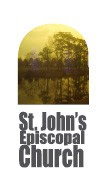October 27, 2013 – 23 Pentecost
Joel 2:23-32
God’s Response and Promise
God’s Spirit Poured Out
Background: The Book of Joel is the
second book in the Masoretic book of the Twelve Prophets. Joel (meaning the
Lord [יהוה] is God in Hebrew) is a prophet, most likely in
post-exilic Israel. The book spans not only the classic prophetic works but
also speaks of the apocalypse through the use of liturgy. Joel introduces the
theme of restoration following the attack of the “army (of locust)” by יהוה’s hand. Joel opens the door to the theme of the
Lords’ day in later works.
Theme: This passage marks
the transition from God’s demand for Israel’s Lament ceremony into God’s
oracles of restoration for Israel. This passage is the first and second series
of oracles of restoration pronounced by God through Joel for “all the people”
to hear so they may believe in God’s promise.
Questions to Ponder:
* Read Joel 2:18-32.* What is the setting and function of the book of Joel? When do you think the book was written? Given that composition date, who is in charge politically and spiritually in Israel?
* What does the imagery of the locust attacking or eating
all the crops conjure for you? What might the imagery of the locust been a
reminder of for the Israelites?
* How might this passage have shaped the development of the
coming of the Spirit at Pentecost found in the New Testament?
* Do you think the message of salvation and reconciliation,
offered in verses 28 and 29, is a message of universal salvation? How is this
message of salvation understood in Christian terms?
* What might the differences in the visionary methods;
prophesy, dreams, and visions; listed in verse 28?
* The declaration in verse 32, “Then everyone who calls on
the name of the Lord shall be saved…” seems absolute (if you ask you will be
saved). How does this perception agree or disagree with other Scripture and
your experience?
* Why might the allusion to the Exodus appear in verses 30
and 31? Do you think Joel is portraying this vision as the “new Exodus” – God’s
deliverance from the world on the Lord’s Day?
* Verse 32 seems to say that there will be other survivors
in Jerusalem alongside those who have been called by God. What are your
thoughts about this possibility? Might there be some who survive the “coming of
the unholy army [the army of locust]” who aren’t numbered among the chosen ones
of God?
* What might have been challenging to the Israelites in Joel’s
day and for the early Christians?
* How might this passage shape the works and outlook of the
believers?
* How might this passage be translated into God’s message of
redemption in our present society and social structure?
* How are you challenged by God through this passage?
* What is the message of hope we (at St. John’s) share from
this passage?





No comments:
Post a Comment